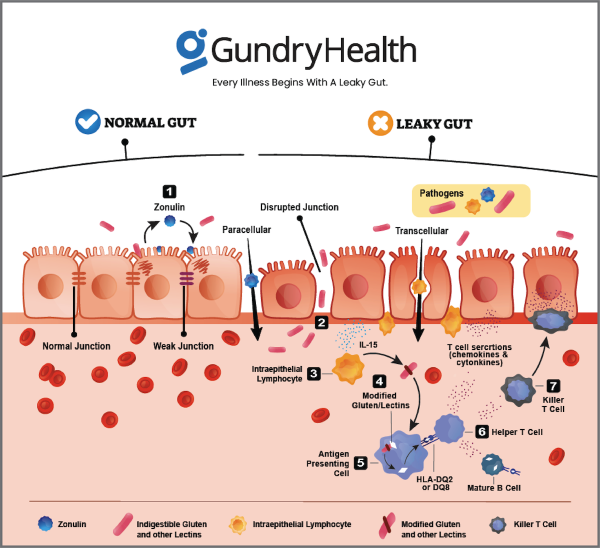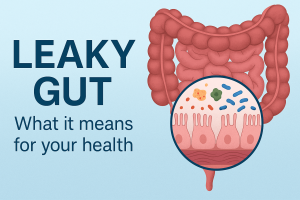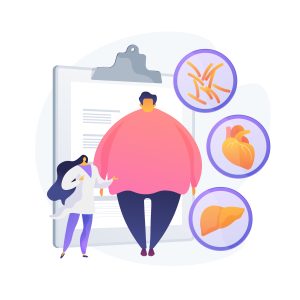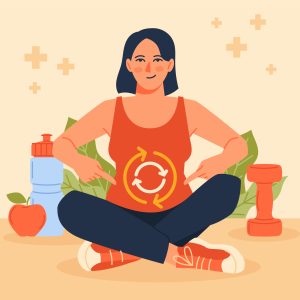Unraveling Postural Orthostatic Tachycardia Syndrome (POTS): A Comprehensive Guide by Gundry Health
Postural Orthostatic Tachycardia Syndrome (POTS) is a medical condition that primarily affects the autonomic nervous system, leading to a range of symptoms, most notably an abnormal increase in heart rate when transitioning from lying down to standing up. POTS is characterized by an excessive increase in heart rate (tachycardia), typically defined as an increase of 30 beats per minute (bpm) or more within 10 minutes of assuming an upright posture. This rapid heart rate often leads to various symptoms, which can be debilitating for some individuals.
There is an increasing body of research indicating that POTS could potentially have an autoimmune origin. Studies have reported the presence of antinuclear antibodies and elevated levels of antibodies targeting ganglionic, adrenergic, and muscarinic acetylcholine receptors in individuals with POTS.
Symptoms and Diagnosis
Postural Orthostatic Tachycardia Syndrome (POTS) can present with a wide range of symptoms, and the severity and combination of symptoms can vary from person to person. POTS is primarily characterized by an abnormal increase in heart rate when transitioning from lying down to standing up, but it often involves a constellation of other symptoms.
Common symptoms associated with POTS:
- Tachycardia: The hallmark symptom of POTS is a rapid increase in heart rate upon assuming an upright position. This increase is typically defined as a heart rate increase of 30 beats per minute (bpm) or more within 10 minutes of standing.
- Orthostatic Intolerance: People with POTS often experience symptoms when they stand up. These symptoms may include:
- Dizziness: Feeling lightheaded, woozy, or as if you might faint
- Lightheadedness: A sensation of feeling “light-headed” or unsteady
- Near-fainting or fainting (syncope): Some individuals with POTS may actually lose consciousness when standing due to the rapid heart rate and decreased blood flow to the brain.
- Fatigue: Chronic fatigue is a common and debilitating symptom of POTS, often described as feeling exhausted or drained even with minimal physical activity.
- Cognitive Dysfunction: Many people with POTS experience cognitive difficulties, often referred to as “brain fog.” This may include problems with concentration, memory, and mental clarity.
- Nausea: Gastrointestinal symptoms, such as nausea and sometimes vomiting, can occur in POTS patients.
- Headaches: Headaches, including migraines, are a common complaint among individuals with POTS.
- Temperature Sensitivity: POTS symptoms can be exacerbated by changes in temperature, especially heat. Heat intolerance can lead to increased sweating and discomfort.
- Exercise Intolerance: Physical activity can be challenging for those with POTS, as it can worsen symptoms like tachycardia, fatigue, and dizziness.
- Palpitations: Some individuals with POTS experience a strong awareness of their heartbeats, known as palpitations.
- Tremors or Shivering: Trembling or shivering, particularly in the hands, may occur in some POTS patients.
- Shortness of Breath: Some individuals with POTS may feel breathless or have difficulty breathing, especially during physical exertion.
- Gastrointestinal Symptoms: POTS can be associated with gastrointestinal issues such as abdominal pain, diarrhea, or constipation.
It’s important to note that POTS is a complex and heterogeneous condition, and not all individuals with POTS will experience every symptom listed here. Additionally, POTS symptoms can overlap with those of other medical conditions, so a comprehensive evaluation by a healthcare provider, often a specialist in autonomic disorders or cardiology, is essential for an accurate diagnosis and tailored treatment plan. Treatment for POTS typically involves a combination of lifestyle modifications, physical therapy, and medications aimed at managing the specific symptoms and improving the patient’s quality of life.
Diagnosis
To diagnose POTS, doctors will perform a physical exam and take a detailed medical history. They may also perform a tilt table test, which involves lying on a table that is tilted to an upright position to see how your body responds to the change in position6. Doctors also make sure the problem isn’t due to anything besides the autonomic nervous system. Depending on the symptoms, tests might be done on other parts of the body. These might check the blood, heart, brain, eyes, ears, kidneys, muscles, nerves, hormones, digestive tract, and more.
Understanding POTS: Causes and Triggers
The exact cause of POTS is often preceded by a viral illness, surgery, trauma, or periods of immobilization. Certain triggers like standing up, heat, exercise, eating, and stress can exacerbate symptoms.
Causes
POTS can develop suddenly or gradually over time. POTS can affect patients of all genders and ages, but it mainly affects women between the ages of 15 to 50 years of age. Some women report an increase in episodes of POTS right before their menstrual periods. POTS often begins after a pregnancy, major surgery, trauma, or a viral illness.
Treating POTS: Options and Expectations
Treatment for POTS aims to relieve symptoms, improve physical stamina, and enhance quality of life. This might involve medications to control heart rate and blood pressure, increasing fluid and salt intake, wearing compression stockings, and participating in a structured exercise program.
Treatment
Although there is no cure for POTS, a variety of treatments and strategies can help improve symptoms. Treatment options include:
- Lifestyle changes: Drinking plenty of fluids, increasing salt intake, wearing compression stockings, and avoiding triggers such as hot temperatures and prolonged standing can help alleviate symptoms.
- Medications: Medications such as beta-blockers, midodrine, and fludrocortisone can help control heart rate and improve blood flow.
- Physical therapy: Exercise programs, such as graded exercise therapy, can help improve symptoms and increase tolerance to physical activity.
- Counseling: Counseling can help patients cope with the emotional and psychological effects of POTS.
Living with POTS: Lifestyle Tips and Recommendations
Living with POTS can be challenging, but certain lifestyle modifications can make a significant difference:
- Stay Hydrated: Increasing fluid intake can boost blood volume and help alleviate some symptoms.
- Balanced Diet: Consuming smaller, more frequent meals and reducing carbohydrate intake can help manage gastrointestinal symptoms.
- Regular Exercise: A guided exercise regimen can improve POTS symptoms over time.
How Gundry Health Can Help
Remember, POTS is a complex condition and what works for one person may not work for another. It’s important to communicate openly with your healthcare provider, adhere to your treatment plan, and stay informed about your condition.
At Gundry Health, we’re committed to helping you navigate your health journey with POTS. Visit our website for more information or to schedule an appointment with our specialists. Together, we can manage this condition and improve your quality of life.
Get personalized care and recommendations for POTS from Dr Gundry-Approved program
If you’re looking for more guidance about POTS disease than this short list of recommendations, Dr. Gundry’s unique health program is now available to you (without needing an appointment at one of Dr. Gundry’s two, waitlist-only West Coast clinics).
Thanks to the pioneering work of Dr. Gundry and his team at Gundry Health, patient care team trained in Dr. Gundry’s unique holistic methods are now available to help you craft your own personalized POTS program.
It’s easy to get started.
Simply click the link below to get more information about personalized POTS treatment plan options, so you can get expert analysis, diagnostic care, and a plan for tackling POTS, arthritis, or other autoimmune diseases.
Each patient care team member at Gundry Health is Board Certified and trained in Dr. Gundry’s renowned approach to functional medicine and care.
Get your personal lab data and talk to a U.S. licensed doctor. Click Here.
References







